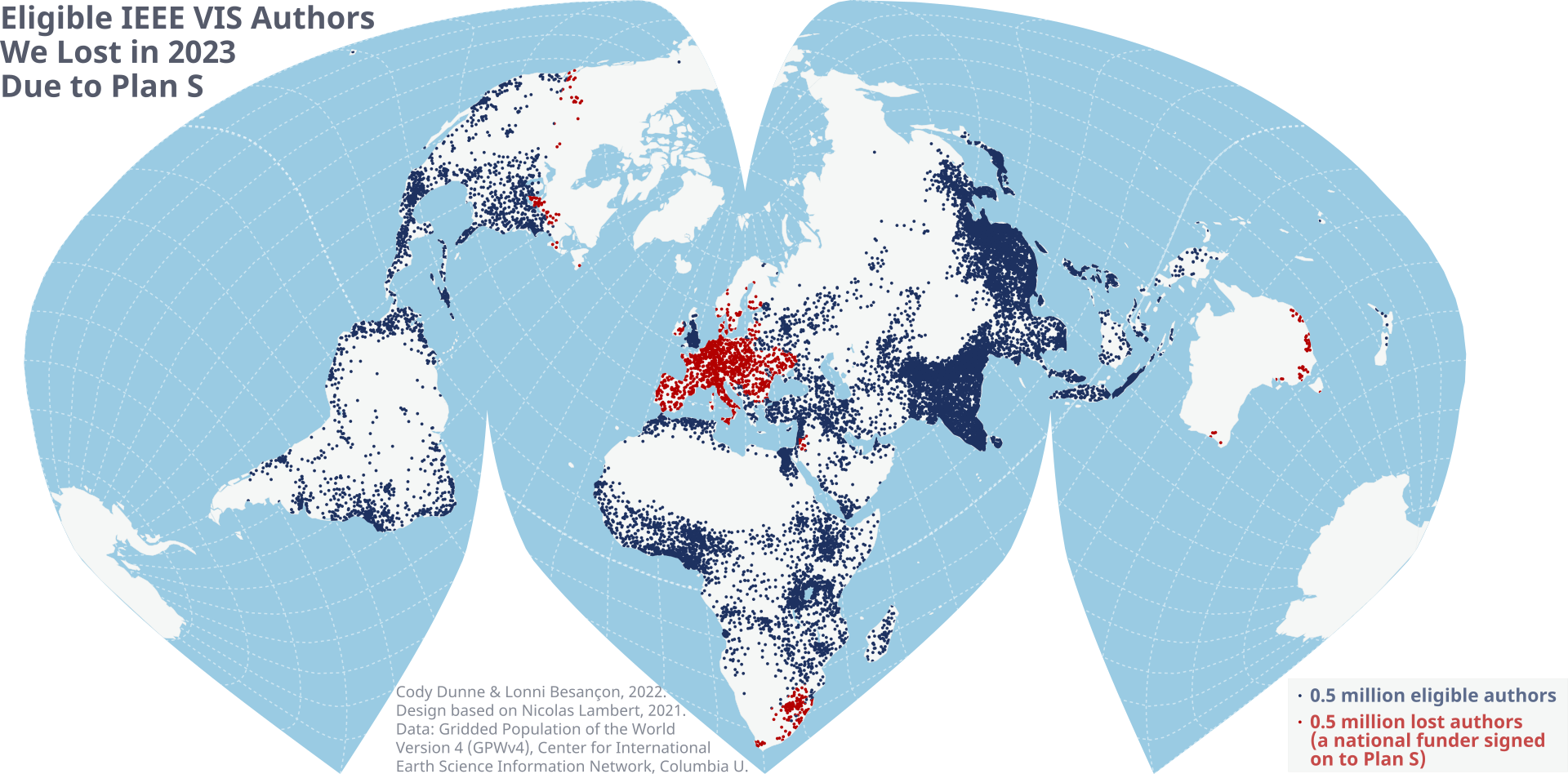DyStopia: Into a potential future of IEEE VIS under Plan S

Abstract
In this manuscript, we take a look at the dystopian future that could lie ahead of VIS should we fail to consider the impact of Plan S. It is the year 2030 and researchers from Europe have not been submitting their research to IEEE VIS for a number of years. We quickly retrace what led to this unfortunate outcome in the hope to avoid it and start an important conversation that would raise awareness in the VIS community about the importance and immediacy of Plan S.
Materials
PDF | Preprint | DOI | Supplement | Teaser Observable | Award | BibTeX | alt.VIS 2022 Most Dystopian Award!Authors
Lonni Besançon
Citation
DyStopia: Into a potential future of IEEE VIS under Plan S
Lonni Besançon and Cody Dunne. Proc. alt.VIS workshop at IEEE VIS—alt.VIS. 2022. DOI: 10.31219/osf.io/gbcdr
PDF | Preprint | DOI | Supplement | Teaser Observable | Award | BibTeX | alt.VIS 2022 Most Dystopian Award!
Khoury Vis Lab — Northeastern University
* West Village H, Room 302, 440 Huntington Ave, Boston, MA 02115, USA
* 100 Fore Street, Portland, ME 04101, USA
* Carnegie Hall, 201, 5000 MacArthur Blvd, Oakland, CA 94613, USA

